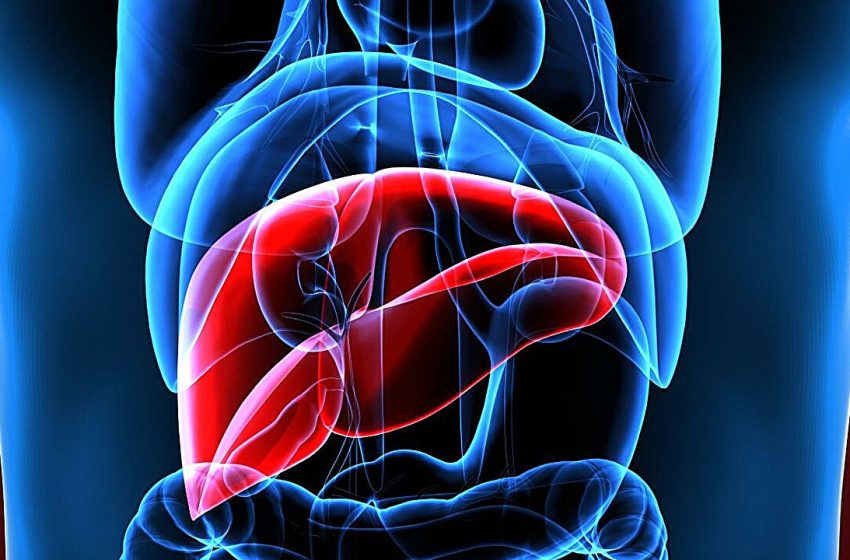How to Find the Right Treatment for Liver Cirrhosis

Liver cirrhosis is a chronic liver disease characterized by scarring of the liver tissue, which can progressively impair its ability to function. The condition is caused by various factors, including excessive alcohol consumption, viral hepatitis, nonalcoholic fatty liver disease (NAFLD), autoimmune disorders, and certain genetic conditions. Although cirrhosis is irreversible, early diagnosis, proper treatment, and lifestyle changes can significantly slow the progression of the disease and improve a patient’s quality of life.
This guide will explore how to find the right treatment for Liver Cirrhosis Treatment in Dubai, covering the steps of diagnosis, treatment options, medications, lifestyle changes, and advanced care, while emphasizing the importance of personalized treatment based on the underlying cause and severity of the condition.
Understanding Liver Cirrhosis and its Causes
Liver cirrhosis occurs when the liver is repeatedly injured, leading to inflammation and scarring (fibrosis). Over time, the scar tissue replaces healthy liver cells, making it difficult for the liver to function properly. In the early stages of cirrhosis, a person may experience few or no symptoms. However, as the disease progresses, complications such as ascites (fluid retention), jaundice, variceal bleeding, and liver failure may occur.
The most common causes of cirrhosis include:
- Chronic alcohol consumption: Long-term heavy drinking can damage liver cells, leading to cirrhosis.
- Hepatitis B and C: Chronic viral infections can cause inflammation and damage the liver over time.
- Nonalcoholic fatty liver disease (NAFLD): Associated with obesity and metabolic syndrome, NAFLD is one of the leading causes of cirrhosis.
- Autoimmune hepatitis: In this condition, the body’s immune system attacks liver cells, leading to inflammation and scarring.
- Genetic disorders: Conditions like hemochromatosis (excess iron buildup) and Wilson’s disease (excess copper buildup) can lead to liver damage.
- Medications and toxins: Long-term use of certain medications, such as methotrexate, or exposure to toxic substances can also lead to cirrhosis.
The treatment approach for cirrhosis will largely depend on its underlying cause, severity, and the presence of complications. To determine the most effective course of action, it is essential to first undergo a comprehensive diagnosis.
Step 1: Diagnosis of Liver Cirrhosis
Accurate diagnosis is crucial in determining the best treatment plan for cirrhosis. If cirrhosis is suspected, a healthcare provider will typically perform a combination of the following tests:
Medical History and Physical Examination
A thorough review of the patient’s medical history is essential to identify potential risk factors, such as alcohol use, viral hepatitis, obesity, or family history of liver disease. During the physical examination, the doctor may check for signs of cirrhosis, such as an enlarged liver or spleen, jaundice, or ascites.
Blood Tests
Several blood tests are used to assess liver function, including liver enzymes, bilirubin levels, albumin, and clotting factors. These tests provide important information about the extent of liver damage and help in determining the stage of cirrhosis.
Imaging Studies
Ultrasound is often the first imaging technique used to assess the liver’s structure. Other imaging studies, such as CT scans, MRI, or elastography (a special type of ultrasound that measures liver stiffness), may be used to evaluate liver size, scarring, and blood flow in the liver.
Liver Biopsy
In some cases, a liver biopsy may be performed to confirm the diagnosis and assess the degree of fibrosis or scarring. A biopsy involves taking a small sample of liver tissue to be examined under a microscope. It can provide detailed information about the severity of cirrhosis and guide treatment decisions.
FibroScan or Transient Elastography
This non-invasive test measures liver stiffness, which correlates with the degree of fibrosis or cirrhosis. It is often used to monitor disease progression or assess the liver’s condition in patients with chronic liver diseases.
Once cirrhosis is diagnosed, determining the cause of the liver damage is essential in formulating a treatment plan.
Step 2: Treatment Based on the Underlying Cause
1. Treating Alcohol-Related Cirrhosis
If cirrhosis is caused by chronic alcohol consumption, abstinence from alcohol is the first and most crucial step. Continued drinking will accelerate liver damage and worsen cirrhosis. It is also important to address any alcohol use disorder through counseling, therapy, and support groups, such as Alcoholics Anonymous (AA).
2. Antiviral Treatment for Hepatitis B and C
-
Hepatitis B: Antiviral medications such as tenofovir and entecavir can help manage chronic hepatitis B infection and reduce liver inflammation. These medications can prevent further damage to the liver but are typically used long-term as the infection cannot be fully cured.
-
Hepatitis C: Direct-acting antivirals (DAAs) have revolutionized the treatment of hepatitis C. These drugs are highly effective in curing the infection, often within 8–12 weeks, and significantly reduce the risk of cirrhosis progression. Treatment regimens vary based on the type of hepatitis C virus, and newer medications like sofosbuvir and ledipasvir offer a cure rate of over 90%.
3. Managing Nonalcoholic Fatty Liver Disease (NAFLD)
For NAFLD or nonalcoholic steatohepatitis (NASH), weight loss and dietary modifications are the primary treatments. Gradual weight loss through a combination of a healthy diet and regular exercise can reduce liver fat, inflammation, and fibrosis. A Mediterranean diet, rich in fruits, vegetables, whole grains, and healthy fats, is recommended. Additionally, controlling underlying conditions such as diabetes, high cholesterol, and high blood pressure is essential in managing NAFLD.
Currently, there are no FDA-approved medications specifically for NASH, but studies are underway to develop treatments targeting this condition. Pioglitazone, a drug used for diabetes, and Vitamin E have shown some benefit in reducing liver inflammation.
4. Immunosuppressive Therapy for Autoimmune Hepatitis
In cases of autoimmune hepatitis, the immune system mistakenly attacks the liver, causing inflammation and damage. The mainstay of treatment is immunosuppressive medications, such as corticosteroids (e.g., prednisone) and azathioprine, which reduce immune activity and inflammation in the liver. Long-term use of these medications can prevent further liver damage and help restore normal liver function.
5. Treatment for Genetic Liver Diseases
In hemochromatosis, a genetic condition characterized by excess iron buildup in the liver, treatment involves phlebotomy (regular blood removal) to reduce iron levels. In Wilson’s disease, which involves copper buildup, medications like penicillamine or trientine are used to remove excess copper from the body.
6. Medications for Liver Cirrhosis Symptoms and Complications
As cirrhosis progresses, medications may be needed to manage symptoms and complications:
- Diuretics: Medications like spironolactone and furosemide are used to manage fluid retention and ascites, a common complication of cirrhosis.
- Lactulose: This medication is used to treat hepatic encephalopathy, a condition where toxins build up in the brain due to impaired liver function.
- Beta-blockers: These are prescribed to prevent the development of esophageal varices, which are swollen veins in the esophagus that can bleed.
- Rifaximin: An antibiotic used in combination with lactulose to reduce the risk of hepatic encephalopathy episodes.
Step 3: Advanced Treatments for Severe Cirrhosis
In advanced stages of cirrhosis, especially when complications like ascites, variceal bleeding, or hepatic encephalopathy occur, additional treatments may be required.
1. Liver Transplantation
For patients with end-stage cirrhosis, liver transplantation may be the only option for survival. A liver transplant involves replacing the damaged liver with a healthy donor liver. Eligibility for a liver transplant is determined by the Model for End-Stage Liver Disease (MELD) score, which assesses liver function and predicts survival outcomes. Successful transplantation can significantly improve quality of life and restore normal liver function, but lifelong immunosuppressive medications are required to prevent organ rejection.
2. Endoscopic Therapy for Varices
Patients with cirrhosis may develop esophageal varices, which can rupture and cause life-threatening bleeding. Endoscopic therapy is used to manage variceal bleeding. During an endoscopy, the doctor may perform band ligation (placing bands around the varices) or sclerotherapy (injecting a chemical to shrink the varices).
3. Transjugular Intrahepatic Portosystemic Shunt (TIPS)
For patients with portal hypertension who do not respond to other treatments, TIPS may be performed. This procedure creates a shunt (passage) between two veins in the liver to reduce portal vein pressure, alleviating symptoms like ascites and variceal bleeding.
Step 4: Ongoing Care and Monitoring
Managing cirrhosis is a lifelong process. Regular monitoring is crucial to detect complications early, assess liver function, and adjust treatments as needed. Patients should continue with blood tests, imaging studies, and liver cancer screenings. Maintaining a healthy lifestyle, following dietary recommendations, and avoiding alcohol and hepatotoxic substances is key to managing the disease and improving long-term outcomes.
Conclusion
Treating liver cirrhosis requires a multifaceted approach, including identifying and addressing the underlying cause, making lifestyle changes, using medications to manage symptoms and complications, and considering advanced treatments like liver transplantation when necessary. With early diagnosis and appropriate treatment, individuals with liver cirrhosis can significantly improve their quality of life and slow disease progression. The right treatment plan depends on various factors, and close collaboration with a healthcare provider is essential to ensure the best possible outcome for each patient.




